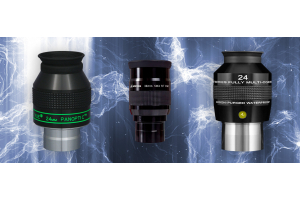
Image Credit: NASA / ESA / ALMA
In an awe-inspiring display of cosmic beauty and scientific discovery, the James Webb Space Telescope (JWST) has captured an unprecedented glimpse of the protoplanetary disk around the young star HH 30, located in the dark cloud LDN 1551 within the Taurus Molecular Cloud, located within Taurus, the Bull. This young star system is located a mere 146 parsecs away from Earth. The new Webb image, shown above, showcases an awe-inspiring scene, with a vertical jet of gas shooting upwards from the disk, surrounded by colorful nebulae that reflect the light from the young star hidden behind the disk. The disk itself is seen edge-on, an extremely rare perspective for astronomers, allowing astronomers to study the vertical structure and dynamics within. The bright areas represent regions where smaller dust grains, about the size of a bacterium, are more widespread, while the darker regions indicate where larger, millimeter-sized dust grains have settled into a thin, dense layer within the disk's midplane.
HH 30 is what is known as a ‘T Tauri’ star, which are unstable variable stars in the very early stages of stellar evolution. They are named after the star T Tauri, which like HH 30 is also in the constellation of Taurus. Stars are born from the gravitational collapse of giant molecular clouds, which are vast regions of gas and dust in space. As the cloud contracts, it fragments into smaller cores that continue to collapse under gravity, heating up and eventually igniting nuclear fusion to form a star, from which they enter the ‘T Tauri’ stage of stellar evolution. The environment around these stars are extraordinarily hot and dynamic. These stars emit an intense amount of radiation and staggering solar winds, which can often reach speeds of hundreds of kilometers per second, making the environment around proto-planets very hostile, effectively sterilizing their surfaces. For this reason, it’s pretty unlikely our own Earth did not have life on its surface until 400 million years after the Sun left this stage of stellar evolution.
Around many T-Tauri stars like HH 30 are protoplanetary disks, similar to rings around planets like Saturn, but much more dynamic. Here are where planets are born. The process of planet formation begins in these protoplanetary disks, where dust and gas orbit a young star. The most likely theory for planetary formation is when large dust grains migrate inward and settle in the disk's central plane, creating a dense layer where they can clump together. This clumping is crucial as it marks the initial stages of planet formation, where dust grains grow into pebbles, then into planetesimals, and eventually into planets. The JWST's infrared observations reveal the distribution of these smaller grains, while ALMA's millimeter observations highlight the concentrated areas of larger grains, showing a clear segregation based on size. Our solar system's formation might have mirrored this process. Early on, our Sun would have been surrounded by a similar disk of material, rich with the future building blocks of life. Future observations of these protoplanetary disks might validate the idea that the early ingredients of life were already present when stars are in the T Tauri phase. The image of HH 30 provides a visual analog, suggesting that our solar system was once a dynamic environment with jets, outflows, and a disk where dust grains of various sizes were sorting themselves out. The presence of a jet in HH 30 indicates high-energy processes, similar to what might have driven material in our solar system to form the planets we know today.
This image, along with observations from the Hubble Space Telescope and the Atacama Large Millimeter/submillimeter Array (ALMA), has provided astronomers with a detailed look into the processes of planet formation, offering a glimpse into what our early solar system might have resembled. The new image from James Webb has provided valuable insight and validation for astronomers about the early stages of planetary formation. Through the combined capabilities of Webb, Hubble, and ALMA, astronomers have observed the incredible dynamics of dust segregation, the presence of high-velocity jets, and the outflows emanating from this young stellar system. These observations provide useful info regarding the environment around T Tauri stars and provide a glimpse into the early stages of our own solar system’s formation. We look forward to learning more about future observations of T Tauri stars!

Learn More
Interested in diving deeper into the world of astronomy? Check out our Astronomy Hub for a wealth of articles, guides, local resources for planetariums and observatories near you, and more to enhance your stargazing experience.








